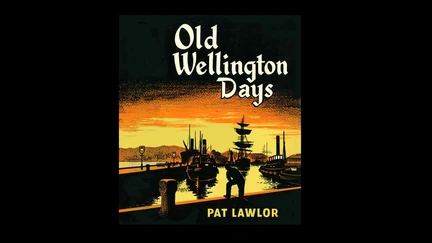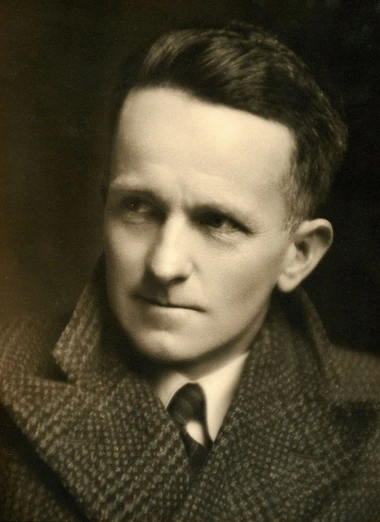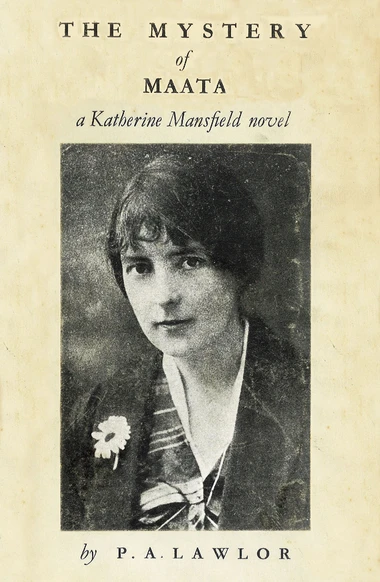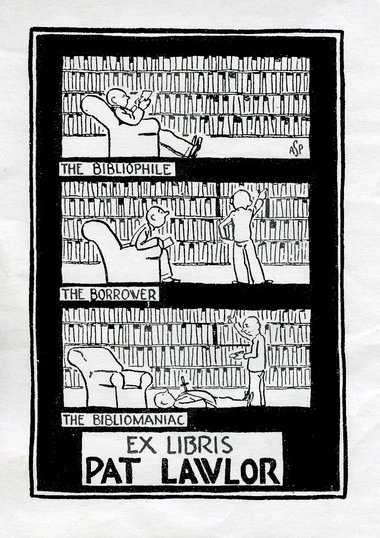Pat Lawlor and the works of 'Mr Wellington'
With the kind permission of his extended family, the most significant published works of Pat Lawlor have been digitised for the first time on Wellington City Recollect.

Few writers have captured the essence of Wellington during the first half of the 20th Century better than Patrick Lawlor. Born in 1893, he grew up above the stationery and bookshop owned by his parents in what is today Cuba Mall before his family moved to upper Cuba Street during his teenage years. He attended Marist Brothers School in Newtown and St Patrick's College which was then located at the top of Tory Street. The streets of Te Aro were to become his playground though the suburb of Lawlor’s youth was then dotted with slums, grog-shops, brothels and opium dens and it would be nearly a century before it was transformed to become the colourful area that it is today.
A few months after leaving school at the end of 1909, he began work at the Evening Post newspaper as a junior ‘copy holder’, reading articles aloud to proof-readers for correction before the text was committed to the linotype machines for printing. This job was to be his entry into the world of journalism, becoming first a 'junior reporter' for the Dominion in 1913 and then bouncing between NZ and Sydney over the following decade working for several different newspapers, his career advancing with each move. He returned and settled back in Wellington, purchased a house in Mt Victoria and together with his wife Amy they raised their family of three daughters and a son. His literary interests and efforts were wide and varied: he edited the NZ Artists’ Annual, worked as the principle NZ correspondent for the weekly Australian Bulletin magazine, was a founding member of the NZ branch of the PEN writers association, founded the Friends of the Turnbull Library and published dozens of pamphlets and books on a variety of topics. He built up friendships with many of New Zealand's pioneering writers including Alan Mulgan, Eileen Duggan, R. A. K Mason and Robin Hyde and his home became well known as a place where new and established literary talent would gather, talk…and enjoy a beer.

Pat Lawlor c. 1935. Photograph by S P Andrew from the collection of Wellington City Libraries, Ref : 50005-27

Lawlor's short book The Mystery of Maata from 1947 investigates the possibility of a 'lost' Katherine Mansfield novel inspired by Maata Mahupuku with whom she had an intense relationship during her teenage years.
Lawlor had a particular interest in Katherine Mansfield and wrote of the possibility that they could have crossed paths when he was a boy. Though she was five years older than Lawlor, they both had similar interests and likely visited the same bookshops and libraries. He also had a role in keeping her name prominent in the 1930s & 1940s when the rise of the 'literary nationalists' saw Mansfield's significance being partially suppressed. His championing of the writer continued into the 1950s when he urged for the restoration of Mansfield's childhood homes on Tinakori Road and in Karori, both then in poor condition and at risk of demolition. In his later years he formed friendships with a new generation of writers such as James K Baxter and Vincent O’Sullivan and became a collector of original cartoons.
Lawlor wrote one novel, The House of Templemore, which was a recreation of his Wellington childhood, but his name came to particular prominence following the publication of his book Old Wellington Days in 1959. Compiled from a series of columns published in the Evening Post, Lawlor took entries from his childhood diaries written more than 50 years earlier and used them to create historic ‘vignettes’ about the social history of Wellington in the early 20th century. With its content being both nostalgic for older Wellingtonians and enlightening for younger ones, the book was a huge success and was reprinted several times in quick succession before a follow-up volume More Wellington Days was published in 1962.
The popularity of these books and Lawlor’s encyclopedic knowledge of the city’s history led to him being bestowed the unofficial title of "Mr Wellington”. A personal and professional relationship developed between him and James & Judy Siers shortly after they had established their publishing firm Millwood Press. The company went on to be Lawlor’s primary outlet for his latter works which included a directory of Wellington's historic pubs and a personal overview of the city’s past. Lawlor was awarded an OBE for services to literature in 1976, The following year ill health forced him to move to Auckland to live with his daughter but shortly before his departure, he was honoured by the city with the naming of a short street in Mt Victoria as Pat Lawlor Close, located near his home of nearly five decades in Hawker Street. He died in Auckland on 19 January 1979 and is buried at Karori cemetery.
Wellington City Libraries wish to acknowledge and thank the extended family of Pat Lawlor for allowing the digitisation of these works on a Creative Common basis. Please note that these books and pamphlets remain under copyright.

Pat Lawlor's personal bookplate which was created for him by the cartoonist Alan Patterson. Lawlor's own library in his Mt Victoria home was said to have contained over 12,000 volumes.
